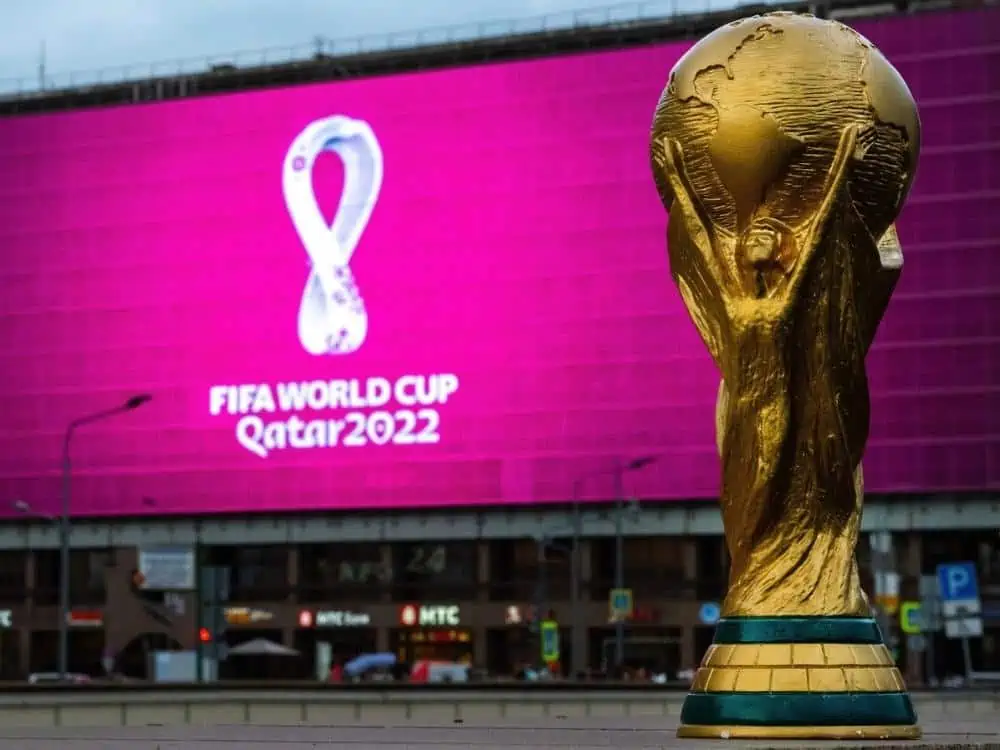Share the post "How did Soccer Spread Globally? Popular History (Amazing Changes)"
Soccer is played in over 200 countries and has spread globally to over 200 million people playing the sport in an organized fashion.
The official Cambridge rules were established in 1848, eventually leading to the separation of soccer and rugby into individual sports (1963).
The history of soccer is interesting and how it went around the world – we also look at the growth today, which is amazing to compare.
How did soccer spread Globally?
- Sailors, military, merchants, traders, and immigrants helped spread the sport to different countries.
- The sport’s rise caused the need for a global body to be formed.
- FIFA was established in 1904.
- The first FIFA World Cup took place in 1930
- A 12-year gap during World War II then occurred every four years since.
- Domestic, intercontinental, and international soccer has continued to spread and grow on a global scale.
- Soccer is by far the most popular sport in the world.
Although these figures are conservative, soccer remains the most popular sport in the world.
It’s played in more countries than any other, and in the majority of cases, it’s the most popular sport there.
Let’s take a more detailed look at soccer’s journey to becoming the world’s favorite game.
How did the soccer growth begin?
Soccer has been played in various forms for over 2,000 years, with the earliest form dating back to the Han Dynasty in China. The Romans brought a variation to England in the 1800s, and it’s from here that the game began to flourish.
How did soccer grow so quickly?
Games involving the kicking of a ball into a goal have been around for thousands of years. Evidence of this exists in China, Korea, Ancient Greece, and other regions ruled by the Roman Empire throughout history.
However, these sports are a far cry from today’s games.
The Romans brought their version of the sport to the UK in the 1800s. This sport was somewhat of a combination of soccer and rugby.
The sport began to gain popularity, particularly in schools and colleges.
In 1848, the first official Cambridge Rules of the game were established. However, it wasn’t until the founding of the English FA in 1863 that the distinguishing ruleset of soccer was firmly set in place.
Until this point, there were still elements of rugby mixed in.
Over the next number of years, soccer teams were established in England and further afield. Sailors, military, merchants, traders, and workers brought the sport to every corner of the globe.
Leagues and franchises were established on several continents, including professional teams in Africa in the 1880s.
The oldest running soccer tournament in the world, the English FA Cup, was first played in 1872, as was the first international match (Scotland vs England).
The IFAB was established in 1886, and to this day remains the governing body of the Laws of the Game.

When Did The Soccer Federation Start?
Due to the global rise of soccer, it was deemed necessary to create an international governing body for soccer. FIFA was established in 1904.
Their role differed from IFAB in that they oversaw the competitive side of world soccer, not the rules.
FIFA set out to create, organize, and run international soccer competitions. Ultimately, they failed at this for many years.
However, they managed the soccer aspect of the Olympics from 1908. Originally it was played by amateurs.
Olympic soccer grew in stature over the next two decades and the number of nations competing expanded to Africa and South America. Eventually, this led to the first FIFA World Cup in 1930.
The World Cup History and Beginnings
As soccer had become a very popular and successful aspect of the Olympic Games, FIFA was keen to start its own official international soccer competition.
The inaugural FIFA World Cup was announced. The first tournament took place in Uruguay in 1930.
13 nations took part: Uruguay, Argentina, Chile, France, Mexico, Yugoslavia, Brazil, Bolivia, Romania, Peru, USA, Paraguay, and Belgium.
- Uruguay went on to win the tournament.
- They followed this up with their second win, four years later, in 1934.
- The World Cup has taken place every 4 years since.
- Other than 1942 and 1946, during the war.
The tournament expanded to 24 teams in 1982, and then to 32 teams in 1998. This has allowed for more nations from different continents to compete.
FIFA announced that the 2026 World Cup will have 48 teams in the finals, showing how the sport continues to grow.
There have only been 8 winners of the competition:
Soccer World Cup Winning Teams
| Country | Number of WC Wins |
| Brazil | 5 |
| Germany | 4 |
| Italy | 4 |
| France | 2 |
| Argentina | 2 |
| Uruguay | 2 |
| Spain | 1 |
| England | 1 |
The current champions are France (2018). The next World Cup is set to take place in Qatar in 2022, and it’ll be the first to take place mid-season, during the winter.

The Global Game
Women’s Soccer Beginnings
When soccer emerged in the 1800s, it was played by both men and women. Although it’s not as popular as the men’s game, women’s soccer has grown massively over time.
There are women’s versions of almost all major tournaments.
The FIFA Women’s World Cup in 2019 broke records worldwide when the final was watched by 1.12 billion people.
This demonstrates the progression that they’ve made in the sport.
At the team or franchise level, professional leagues exist worldwide and have grown with the sport.
Players have been paid to play since 1885, leading to a tremendous amount of money being injected into the game.
Soccer has been a lucrative sport for a long time, and many prestigious tournaments now exist.
There are tournaments on every continent, drawing large crowds and high viewership.
Soccer Competitions Around The World
| Region | Europe | The Americas | Asia | Africa |
| National | European | International | International | International |
| Competition | 1. UEFA European Championships 2. UEFA Nations League | 1. Copa America 2. CONCACAF Gold Cup | 1. AFC Asian Cup | 1. Africa Cup of Nations |
| Domestic | Team | Team | Team | Team |
| Competition | 1. UEFA Champions League 2. UEFA Europa League 3. UEFA Conference | 1. Major League Soccer (MLS) 2. Copa 3. Libertadores 3. Liga MX 4. Brasileirao 5. Argentine Primera | 1. AFC Champions League | 1. CAF Champions League |
Television Broadcasting Spread Soccer Globally
TV broadcasting is the biggest factor that has led to the extent of soccer’s global spread. It’s the most-watched sport worldwide, with the majority of viewers tuning in to games on their TVs.
Broadcasting rights for soccer are some of the most valuable assets in television. For the 2019 – 2022 cycle, the English Premier League alone sold its TV broadcasting rights for $11.7 billion!
Video Games Increased the Popularity of Soccer
Video games are a huge part of modern society, especially among youth. FIFA soccer video games have had a major influence on the increase in the popularity of soccer in the USA.
People Shared Soccer on Social Media
The current social media era has seen fans get more access to players and franchises than ever before.
They also act as advertising and promotional channels for sponsors. Players have commercial value, as well as on-field value.
Soccer’s Here to Stay – The Future of Soccer
As you can see, there are many reasons for the growth of soccer globally. Perhaps some may have been more significant than others, but the main factor remains that people simply can’t get enough of it.
No matter where you’re, you’ll find people either playing, watching, or talking about it. Each year, we’re seeing growing numbers of fans, as well as incredible sums of money being invested in the sport.
Soccer is here to stay, and I for one am glad. For more useful guides, see the articles below or visit our home page.
Related Questions
Where did soccer get its name?
Soccer’s official name is “Association Football”. In the late 1800s, this was shortened to “socc” and the “er” was added due to a slang trend – the Oxford “-er” slang.
What’s the oldest soccer franchise in the world?
Sheffield Football team is the oldest franchise in the world, dating back to 1857.
The team still exists today, but should not be mistaken for Sheffield United F.C. or Sheffield Wednesday F.C.
How did soccer come to America?
Soccer came to the USA in the 1800s when immigrants from England, Scotland, Ireland, Germany, and Italy brought it from Europe.
Share the post "How did Soccer Spread Globally? Popular History (Amazing Changes)"
Joel is a seasoned soccer journalist and analyst with many years of experience in the field. Joel specializes in game analysis, player profiles, transfer news, and has a keen eye for the tactical nuances of the game. He played at various levels in the game and coached teams - he is happy to share his insight with you.



